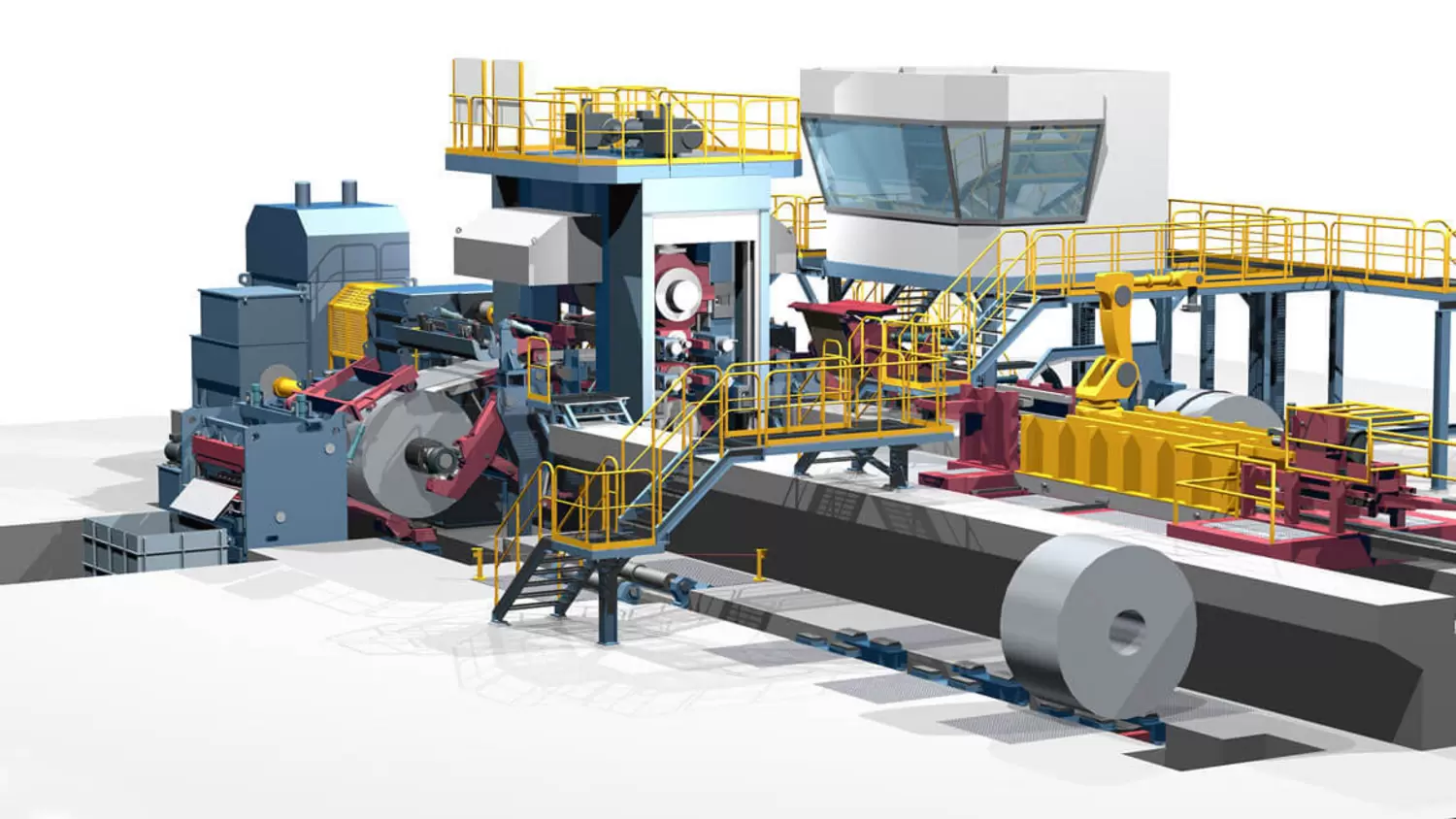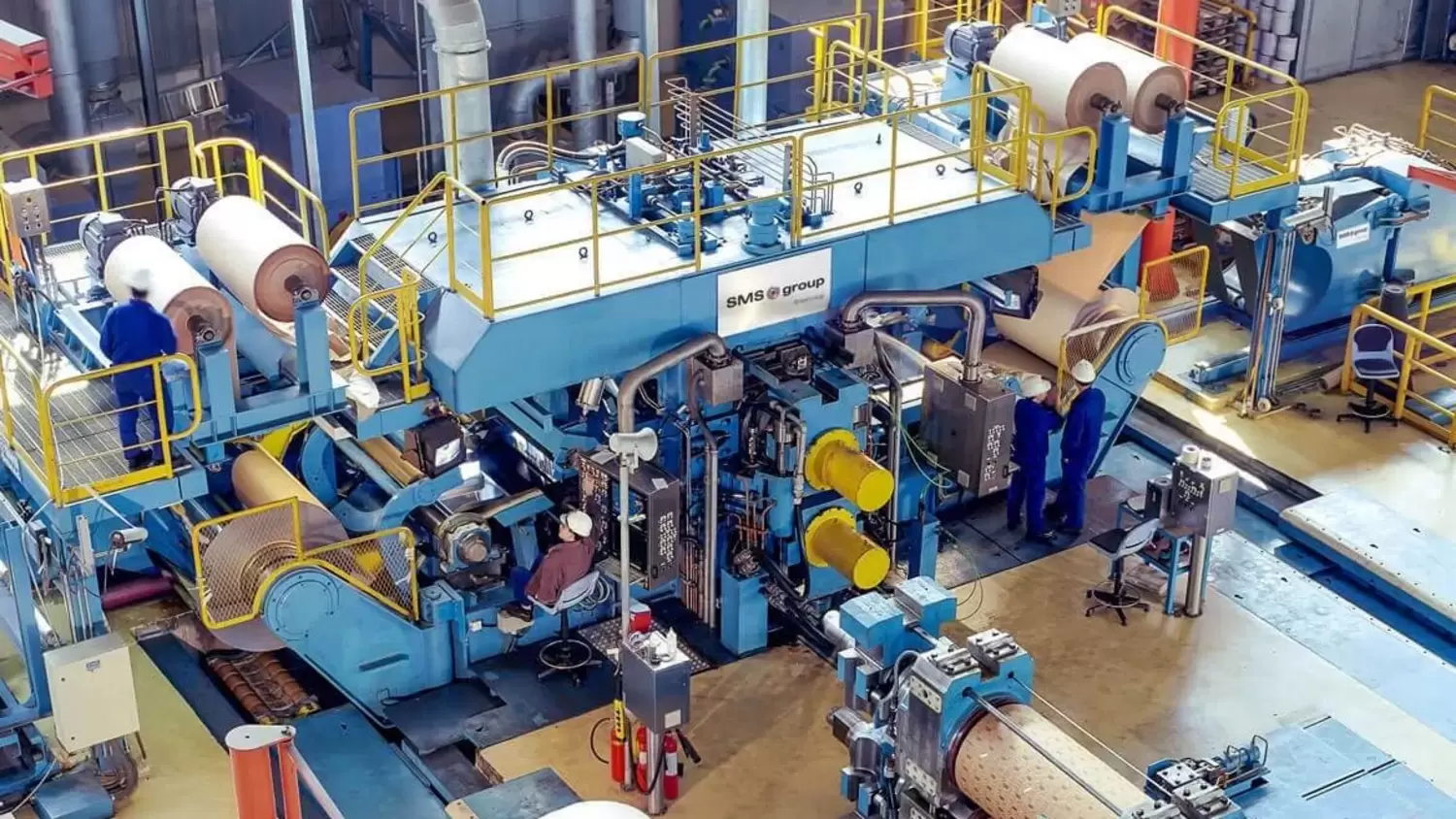A perfect finish for hot and cold rolled strip
Today, there is cold-rolled strip almost everywhere you look. It comes with various surface effects: high-gloss, matt or anywhere in between for beautiful, elegant finishes. Yet steel strip surfaces are not only good-looking, they also have important technical functions. Take for example the correct roughness, which ensures perfect painted surfaces. Other material properties are essential for industrial processing, e.g. deep drawing.
Most important of all steps here is skin-passing following cold strip manufacture. Skin-pass mills (SPM) from SMS group achieve the precise mechanical and geometrical properties you need for your applications. It’s a process that serves to attain the correct yield points and the desired surface characteristics such as roughness and flatness.
-
Offline skin-pass mill for cold strip
High versatility from hard to ultra-mild strip
Main dataOur offline skin-pass mills for carbon steels are stand-alone rolling plants. They usually follow the batch-annealing stage and offer high versatility for processing both hard and ultra-mild strip. The 4-high stands accommodate work rolls in various diameters to apply different rolling forces. That enables production of a wide range of products. Smaller work roll diameters reduce the rolling force when skin-passing high-strength steel strip. Larger work rolls are ideal for processing very mild steel grades with a high rolling force. This not only improves surface roughness but also extends the work roll lifetime. Alternatively, you can choose SPMs in 6-high design for particularly challenging tasks.
![]()
Offline skin-pass mill for cold strip -
Inline skin-pass mill for cold strip
Continuous operation and high productivity
Main dataIntegrated in the exit section of annealing or hot-dip galvanizing lines, or pickling line of multi-purpose line, the skin-pass mills ensure the perfect finish of the strip treatment. The benefits are lower cost and effort for coil handling, better productivity, and higher profitability. You can change the rolls while the strip remains in the mill. This cuts non-productive time.
The conventional 4-high design gives you the option of installing two different work roll diameters. Also integrated here is special equipment that changes the work rolls within just 90 seconds.
Since 2003, we have also been supplying ISPMs in 6-high design for highly demanding tempering tasks. That ensures even better strip flatness due to the larger adjustment range of the 6-high mill. Not only that – you can skin-pass a wider product mix. Available for both stand types are CVC®plus as well as our X-Shape flatness measurement and control system.
![]()
Inline skin-pass mill for cold strip -
Skin-pass mill for hot strip
Perfect flatness and yield points
Main dataThe offline skin-pass mills for hot strip are independent rolling mills that can be flexibly operated from various process stages. Skin-passed hot strip offers you these advantages: Most importantly, this process helps you attain perfect strip flatness. It also harmonizes the yield points and prevents the flow and break lines that can occur during uncoiling. Furthermore, the downstream pickling process is easier because skin-passing breaks up the scale layer. Recoiling provides a better coil shape.
Included in the process is cutting off the head and tail ends of the strip as well as the off- gauge materials. To safely handle today’s new materials – especially high-strength steels – the hot strip skin-pass mill (HSPM) comes with technology designed for materials with the “spring effect”. Our solution for hot strip skin-passing is a mill in 4-high design – optionally with CVC® plus – complete with coil preparation station and pay-off reel on the entry side as well as one tension reel, an inspection table, plus a hydraulic shear on the exit side. To ensure top strip quality and yield, our mills achieve positive and negative work-roll bending. They also include our X-Shape flatness measurement and control system.
![]()
Hot skin pass mill -
Skin-pass mills for stainless steel
Applying a gloss finish to stainless steel strip
Main dataThe next stage after cold-rolling and recrystallization is skin-passing the stainless steel strip. This produces high-gloss surfaces and achieves the desired mechanical strip properties such as deep-drawing strength. Skin- passing is mainly performed on 2-high reversing mill stands. What’s evident today is that customers are increasingly choosing 4-high designs. You can also opt for a combined 2-high and 4-high stand solution.
There are two versions to suit various plant configurations: inline skin-pass mills are integrated in the annealing and pickling line and/or the bright annealing line, while offline mills are installed downstream.
![]()
Stainless steel skin-pass mill -
Double cold reduction mill
Second rolling stage for tinplate
Main dataA special feature of tinplate production is the second rolling step for thickness reduction after annealing. Running parallel to this is a temper rolling process that prepares the strip for further surface finishing and coating. Our twin-stand double cold reduction mills (DCR) combine reduction rolling and skin-passing in a single mill. First up is thickness reduction in one stand, followed by skin-passing in the second stand. This ensures precise material properties and surface roughness of the tinplate and guarantees smooth further processing. You can rely on the best results from our DCR mills in CVC® plus design. They achieve excellent strip quality with proven technical solutions such as our new enhanced bending system for an extremely large roll gap range, multizone cooling, and Dry Strip system (DS system). A further advantage is that these mills can be operated in dry and wet tempering modes. Depending on the required capacity and product mix, we offer you DCR mills for batch as well as continuous inline operation in tinplate production lines.
![]()
Double cold reduction mill
SMS group email service
Our promise to you: this is not another newsletter!
Use our contact form for questions, inquiries or personal contact.
-
Superior design and actuators for roll gap setting
Better yield and quality
Outstanding CVC® plus 4-high and CVC® plus 6-high designs for better yield and quality, proven by more than 800 installed systems.
Benefits
- Shifting under all load conditions
- A very large roll gap adjusting range for flexible handling of a wide variety of incoming hot strip profiles
- Top flatness results
- Excellent strip quality due to uniform load and roughness transfer
- Low operational costs with less roll wear and less maintenance




